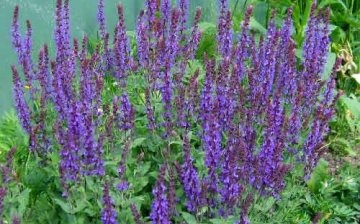Salvia officinalis
Salvia officinalis is well known in folk medicine. Its historical homeland is the Mediterranean, from where it spread throughout the planet in ancient times. Mentions of this truly miraculous plant are found in the writings of many Roman and Greek physicians, in particular, Hippocrates calls it "sacred herb" and strongly recommends using it to treat a number of diseases. And this is not at all surprising, because the very name of sage, "salvia", comes from the Latin word, which means "to be healthy."
Sage has a huge number of varieties with various medicinal properties (however, among these plants you can find several quite dangerous ones, for example, causing severe hallucinations). But such dangerous plants live mainly in countries with hot climates, in particular, in Mexico. In the middle lane, meadow sage is most often found, which, in terms of medicinal properties, is an order of magnitude inferior to the medicinal species, specially grown on personal plots and in vegetable gardens to collect medicinal raw materials.
An interesting feature of sage is that the maximum amount of nutrients is present in those plants that are cultivated by humans. The fact is that this species is a semi-shrub, and old shoots growing in natural conditions "take" a significant part of the healing components from young shoots. Garden sage is regularly rejuvenated, leaving exceptionally young strong leaves.



